|
A “Tail” of Two SeaMasters: Mach 2 - Anigrand Comparo
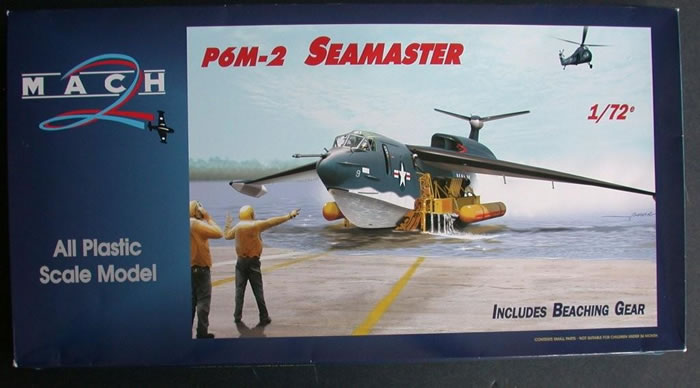
by "Bondo" Phil Brandt

HyperScale is proudly supported by Squadron.com
HISTORICAL BACKGROUND
The Martin SeaMaster was quite an ambitious project: a six hundred knot nuclear weapon-capable seaplane, a main player in the Navy’s envisioned Strategic Strike Force (SSF) of the early Fifties. The plane’s tortuous nine-year developmental struggle was just starting to see daylight when the plug was pulled in 1959. The SeaMaster had simply been overcome by events and program cost overruns. The launching of large, nuclear-powered fast carriers with nuclear-capable A3J Vigilantes aboard, and the nuclear submarine force armed with Polaris missiles had figuratively sunk a weapons system that needed expensive refueling/maintenance stations which were sitting ducks for attacking enemy air forces. And, SAC certainly wasn’t too excited either over a naval threat to its strategic bomber supremacy It’s shameful that Navy policy of the Fifties didn’t allow even one complete example of the SeaMaster to survive in a museum.
KIT HISTORY
Brown just dropped off the my latest acquisition from Sprue Bros, the injected Mach 2 P6M-2 Martin SeaMaster. This release is the fourth 1/72 iteration–Revell led the way in SeaMaster kits with its box scale release in the Fifties--to enter the Weirdness Works Department of the Bondo Industries Difficult Kit Division: Airmodel’s relatively crude vac of at least twenty-five years ago; the slightly undersized Stratosphere Models vac from the Great White North; the recent Anigrand all-resin release from the former Crown Colony of Hong Kong; and now Mach 2's latest from the Land of the Maginot Line.
Since the Anigrand ( $98 U.S.) and Mach 2 (Sprue Bros. at $100 U.S.; MSRP $120) kits are within a coupla bucks of each other, not counting shipping, let’s look ‘em both over to see where our discretionary funds should be directed. Mach 2 bashers, moi included, may be surprised!
MOLDING
As per usual, the Anigrand resin components are smooth (not as much though as, say, those of Planet Models) and delicately engraved. Very few, if any, bubbles. Some damage such as a broken (and missing) cockpit floor. Occasionally incorrect components; my SeaMaster came with two left-hand floats. Arnold at Anigrand sent correct replacements.
The Mach 2 low pressure, limited run injection molding process features, as always, large spigots, short shots (just one small place in this kit–an exhaust can), many ejection pin marks (which often prevent proper joining of components, and must be Dremeled off) and considerable flash. If you’ve got Mach 2, you know you’re gonna be on “clean-up” detail for hours. The SeaMaster box seems to be about 1/4" short along its length to safely enclose the two very long sprues that comprise the kit. Because the sprues had so little clearance in the typically flimsy Mach 2 box, the thin wingtips were bent and, in fact, one tip was torn off and found floating about loose in the box. However, the soft plastic make bending back into shape an easier job than for most kits.
SHAPE and ACCURACY ISSUES
FUSELAGE
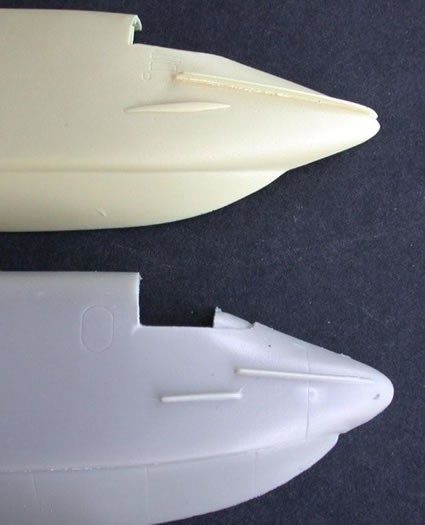
The deeper, “fatter”, nose section of the Mach 2 fuselage is immediately evident, and turns out to be much more correct when compared with photos of both the pre- and production airframes. The Anigrand forward fuselage is less deep by roughly 1/4", and the radome assembly is much longer and more pointed than in the real deal. I have a suspicion that, just as in the case of the incorrectly shaped Anigrand C-124 engine cowlings (that I reviewed a year or so ago), the lines of the master model may have been taken from original Airmodel vac kit 1/72 drawings. The strange
C-124 cowling profiles matched the incorrect Airmodel drawings exactly, as does the Anigrand SeaMaster fuselage when placed over the corresponding 1/72 Airmodel drawing. Hmmmm!
Mach 2 has correctly modeled a small change in the production spray rail mounted on the forward fuselage/radome. That is, the rail doesn’t go all the way around the nose of the radome. Anigrand’s version is that of the pre-production airframe, and they make no mention of altering it for the P6M version. Guess ya just hafta know.
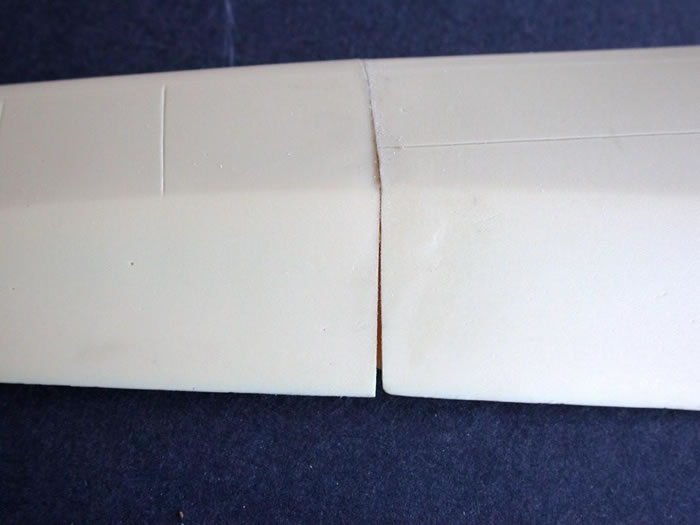
Anigrand decided to cast each long fuselage half in two pieces, probably out of packaging considerations, but this choice invariably leads to surface discrepancies when the keyed halves are joined. Resin is famous for differential shrinkage in large parts, and, even with careful dry fitting, both fuselage joints in my started model will need puttying and careful block sanding. Mach 2 avoids this pitfall by doing two one-piece fuselage halves.
ANIGRAND’S DUAL VERSION FEATURES
The Anigrand release can, in theory, be built either as a pre-production XP6M or a production P6M; the Mach 2 release is a production P6M-2 all the way. In practice, however, the Anigrand P6M production version built OOB will be relatively inaccurate due to wings and engine nacelles.
WINGS
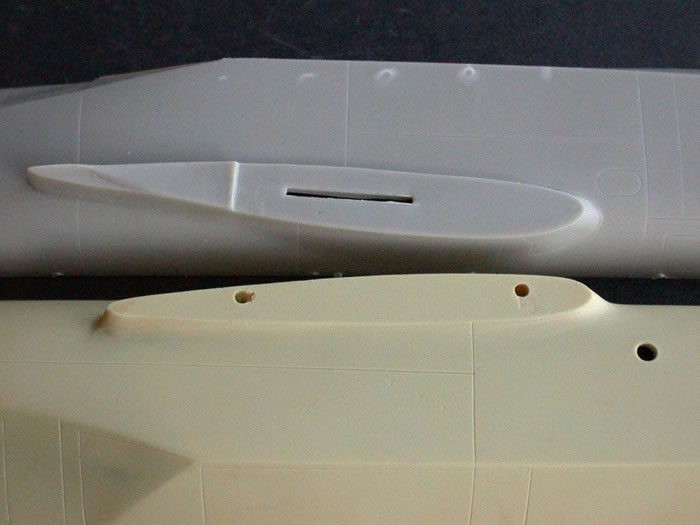
The “cathedral” (anhedral) of the Anigrand pre-production wings is too much to correctly represent the production variant; P6M wings had distinctively less anhedral, enough less that at rest the whole airplane rocked to one side or the other, putting the respective wingtip float in the water and the opposite side in the air. While we’re talking about wings, the depth of the airfoil cross section in the Anigrand release is significantly (1/4”) slimmer than that of the Mach 2. Head-on pix of both pre- and production versions reveal that a “fatter” wing is indeed more correct.
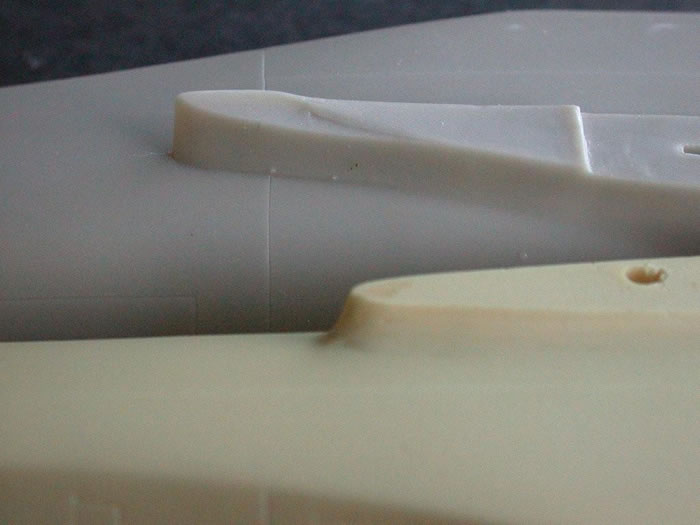
In the real production P6M–I don’t know if the pre-production version had it, because the engine nacelles splayed outward more--the intersection of each wing’s trailing edge and the fuselage has a small fairing that extends aft, beyond the trailing edge. This fairing accommodates the profile of the aft engine nacelle. The Anigrand kit doesn’t feature this; Mach 2 does.
ENGINE NACELLES
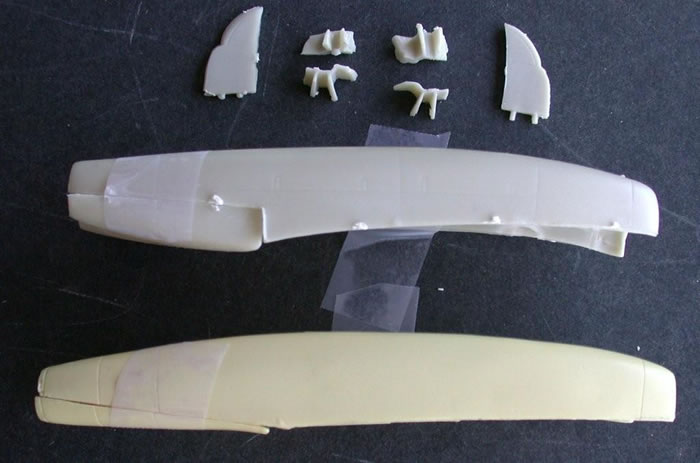
The aft end of the production (J75) engine nacelles furnished by Anigrand are, although labled as being for the P6M , insufficiently “jacked up” above the wing trailing edge, and are more like those of the pre-production, Allison J71-engined ones. This feature of the P6M-2 is very evident in pictures, and is correctly captured by Mach 2. Further, Mach 2 engine nacelles include late model options such as large splitter plates (to reduce engine-out buffet), nacelle spoiler strips on the nacelle tops and flow reversal fences in the intakes.
CLEAR PARTS
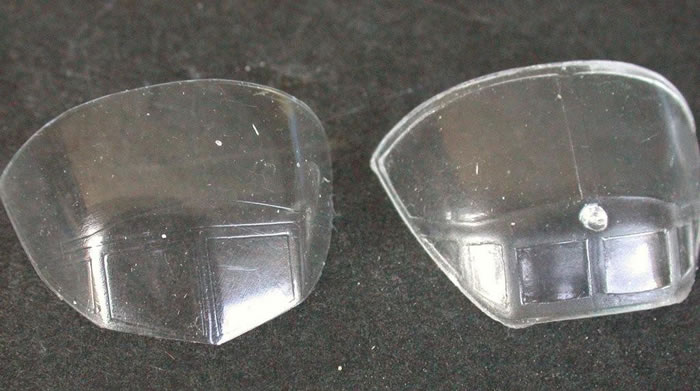
There’s only one in the Mach 2 kit, and it’s REALLY bad: incorrectly mastered and poorly produced. Compared to Anigrand’s accurate, clear, thin, vacuform late model windscreen/canopy (that kit offers both versions), the Mach 2 canopy continues a long tradition of clunky, rough, Coke bottle-thick, somewhat opaque, injected clear (and I use that term loosely) components. Mach 2 veterans will understand my drift.
Photos of production (and pre-production) SeaMaster cockpit areas plainly show that there are no small, extra outboard windscreen panels wedged between the two main panels that form a vee on the fuselage centerline and the two triangular outboard panels that sweep around the windscreen corner to join the bulbous, re-designed canopy. No how, no way!
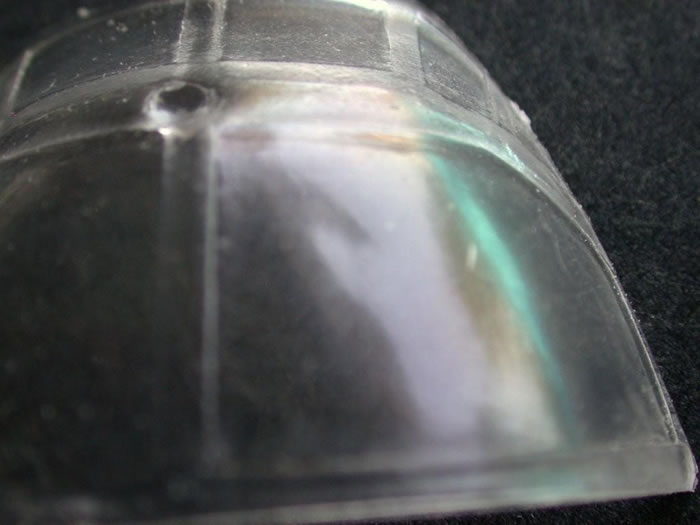
Additionally, the real deal SeaMaster windscreen comes to a much sharper vee than that provided by Mach 2, which essentially goes straight across (no vee). Metal frame dividers between windscreen panels are much slimmer in the real thing; the Mach 2 dividers look more like something from an armored vehicle! And, to add insult to injury, there is a very noticeable production “dent” right in the middle of the Mach 2's right side canopy top. Apparently this isn’t a one-time flaw; a nice SeaMaster review to be published in a forthcoming club newsletter by Neal Izumi mentions this same dent.
The caring modeler has two remedial choices here, both relatively painful:
1) If you’re lucky enough to already have the Anigrand kit, its vac canopy will just barely fit (I tried it) the opening in the Mach 2 fuselage. You’ll still have to fill in the too-sharp windscreen corner of the fuselage to match the correct windscreen sweep-around, however.
2) Use the Mach 2 canopy as the basis of a new vacuform master, as I’m going to do. Lotsa fun, but it’s really necessary, and you’ll still have to fill in (and round off) the “old” windscreen corner in the fuselage. If I, in my 100 degree Texas garage, can manufacture a correct, clear, vacuformed windscreen/canopy, why can’t Mach 2? We purchasers of this relatively bigbuck kit are owed a windscreen/canopy recall by Mach 2. Yeah, that’ll happen! Compared with this major flaw–notice I didn’t use“fatal”--the recent Eduard Me-109 canopy shape flap that has engulfed HS Luftwaffe hordes is as a grain of sand on the beach! :)
COCKPITS
Both manufacturers do a minimally adequate job–we’re certainly not talking Tamiyagawa here–of representing a cockpit. Mach 2 furnishes more raised detail: sidewall boxes, instrument panel gauges, etc.; somewhat crude, but better than Anigrand, which provides no sidewall detail and no instrument panel gauges). It’s more important, though, to have some detail in the production P6M because its bulbous, clear canopy reveals much more cockpit area than does the XP’s sheetmetal “roof”. The Mach 2 seats have no harness detail; the Anigrand seats do. Maybe I’ll substitute aftermarket seats such as, say, True Details ESCAPAC units, with the Mach 2 headrests added.
BEACHING GEAR
It’s hard to believe that Anigrand doesn’t offer any beaching gear, let alone the large, distinctive SeaMaster beaching trolley. Pour moi, inclusion of this “busy” piece of gear is an important selling point of the overall Mach 2 offering, even considering its flawed canopy. And, the chrome yellow trolley provides welcome color contrast to the large expanse of Sea Blue airframe. The vivid box art graphically illustrates my point. An aside: the box art painting appears to be taken directly from an oft-seen, dramatic color photo of the YP6M taxiing out of the water perched on said trolley. Since the kit represents the P6M, the artist attempted to make the more angular, shrouded cockpit area of the YP appear instead as covered by the bulbous, almost hemispherical, clear-roofed canopy of the production model.
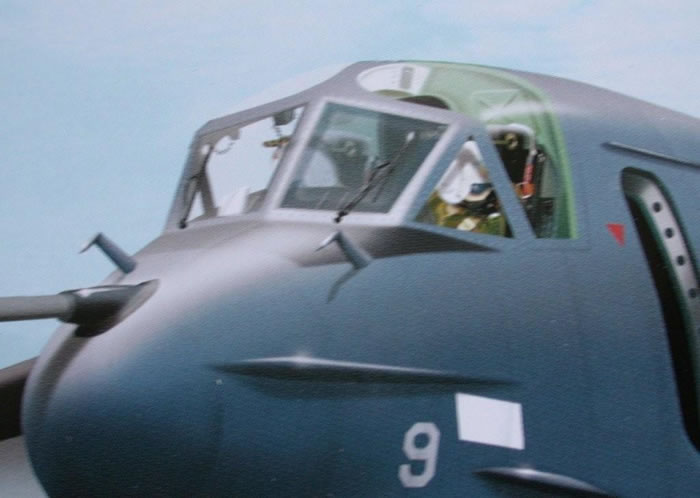
The sharp transition as the aft canopy line goes from the vertical to the horizontal is a dead giveaway that this ain’t the real deal. Nice try!
DECALS
The Anigrand decal sheet accurately reproduces (decent resolution and color) the markings of the pre-production XP SeaMaster. The Mach 2 sheet is, well, it’s what we’ve come to expect: relatively thick, somewhat fuzzy stencils and off-white numerals/tailcodes. The production P6Ms had very few markings, so it should be easy to substitute Aeromaster, etc. aftermarket letters, numbers and national insignia.
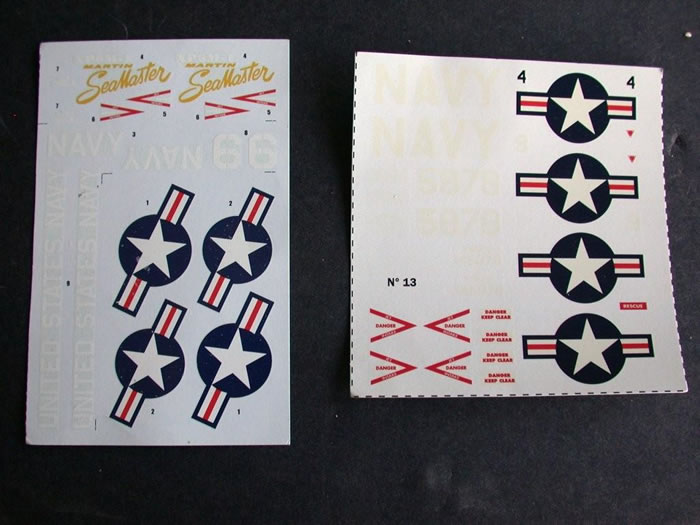
At least the bright white of the aftermarket letters will match the bright white flying surfaces and undersides!
INSTRUCTIONS
Both companies are masters at furnishing minimal text, B&W instruction sheets. This category’s a draw.
Never thought I’d ever write this phrase, but “Advantage Mach 2”! If you can just avert your eyes from the stock windscreen/canopy mess, the overall kit’s more accurate and, with the trolley inclusion, a decidedly better value.
Reference
By far the most comprehensive book on the SeaMaster is “P6M Martin SeaMaster” by Stan Piet and Al Raithel, 2001, Martineer Press, Bel Air, Maryland 21014.
Samples purchased by reviewer
Review Text Copyright © 2009 by "Bondo" Phil Brandt
Page Created 3 July, 2009
Last updated
13 July, 2009
Back to HyperScale Main Page
Back to Reviews Page

|
Home
| What's New |
Features |
Gallery |
Reviews |
Reference |
Forum |
Search